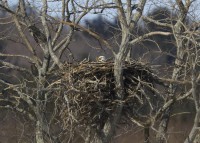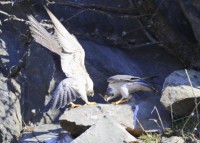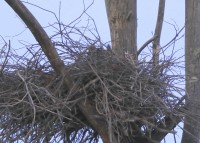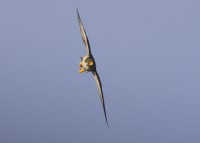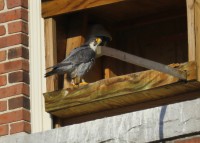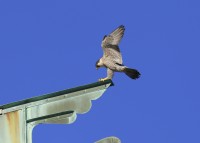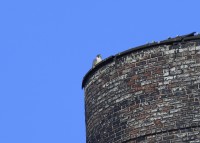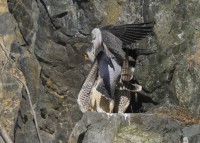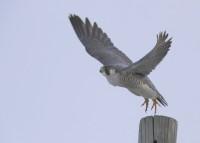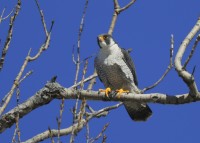 According to an article by well known birder Kevin Ryan, a pair of peregrine falcons, the fastest bird in the world, has made downtown Brockton their home since 2012. They started nesting on the Verizon Tower in 2012 and successfully raised four male young peregrines. The falcons are back this year in the same place and if all goes well, the female falcon should lay 2-4 eggs in the next two weeks or so. Like most local peregrine nests, the female will sit on the eggs for about 30 days and the male will do most of the hunting, for small- to medium-sized birds, such as starlings and pigeons being a city favorite.
According to an article by well known birder Kevin Ryan, a pair of peregrine falcons, the fastest bird in the world, has made downtown Brockton their home since 2012. They started nesting on the Verizon Tower in 2012 and successfully raised four male young peregrines. The falcons are back this year in the same place and if all goes well, the female falcon should lay 2-4 eggs in the next two weeks or so. Like most local peregrine nests, the female will sit on the eggs for about 30 days and the male will do most of the hunting, for small- to medium-sized birds, such as starlings and pigeons being a city favorite.
About 20 years ago with the help of organizations like the Peregrine Fund, and Cornell University, the peregrines started making a comeback, first in large cities such as Boston and New York City and now the numbers are growing so well that they are starting to spread to smaller cities like Brockton and Lawrence. The city of Lawrence has a camera placed at the nest called the Falcon Cam which lets everyone with a computer have a chance to watch these beautiful birds raise their young.
The Brockton pair with any luck should hatch the eggs after about 30 days after the eggs are laid, and about 40-42 days after that the young falcons will take to the skies above Brockton. Who knows, someday Brockton may have a local company sponsor a falcon cam in Brockton!
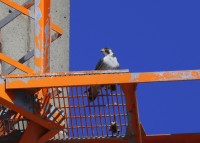
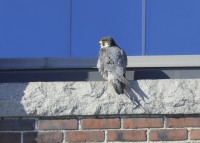 A late afternoon visit by the Clock Tower with both peregrines in sight. The male was seen on a window ledge along the very west wing of the New Balance Building. These ledges are more regularly used by fledglings after first flights. From time to time the adults will be perched on these granite ledges to be near the nest or just to be out of the wind and to soak up the warmth of the late day sun!
A late afternoon visit by the Clock Tower with both peregrines in sight. The male was seen on a window ledge along the very west wing of the New Balance Building. These ledges are more regularly used by fledglings after first flights. From time to time the adults will be perched on these granite ledges to be near the nest or just to be out of the wind and to soak up the warmth of the late day sun!